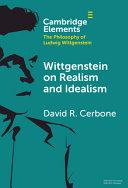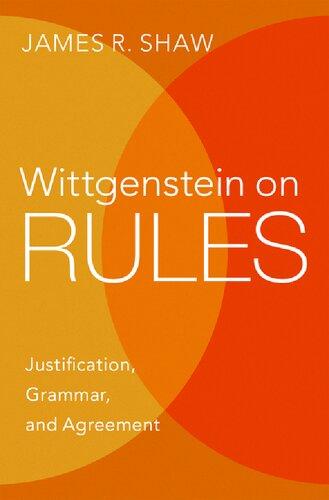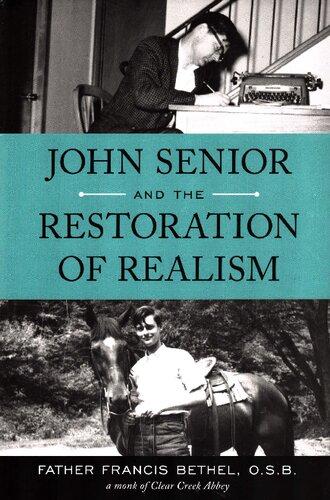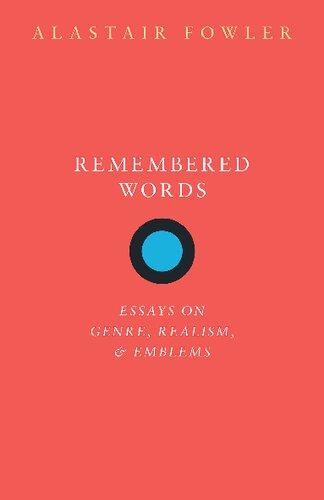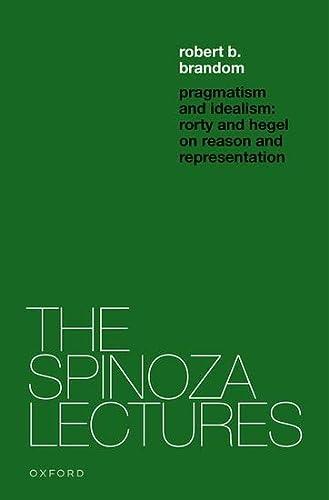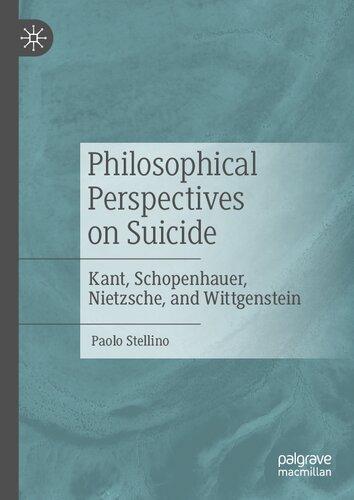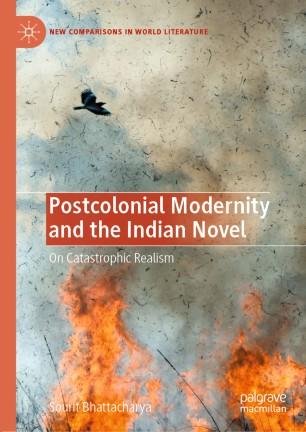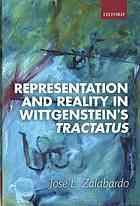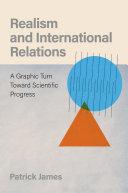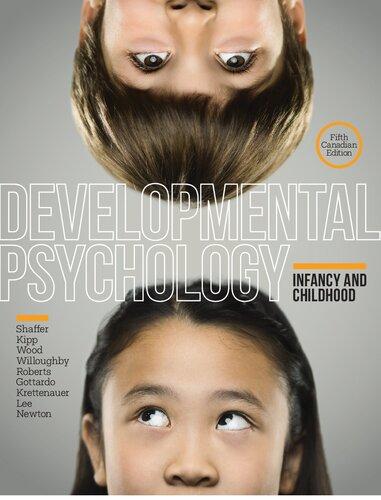WITTGENSTEIN ONREALISM ANDIDEALISM
DavidR.Cerbone
WestVirginiaUniversity
ShaftesburyRoad,CambridgeCB28EA,UnitedKingdom OneLibertyPlaza,20thFloor,NewYork,NY10006,USA 477WilliamstownRoad,PortMelbourne,VIC3207,Australia
314–321,3rdFloor,Plot3,SplendorForum,JasolaDistrictCentre, NewDelhi – 110025,India
103PenangRoad,#05–06/07,VisioncrestCommercial,Singapore238467
CambridgeUniversityPressispartofCambridgeUniversityPress&Assessment, adepartmentoftheUniversityofCambridge.
WesharetheUniversity’smissiontocontributetosocietythroughthepursuitof education,learningandresearchatthehighestinternationallevelsofexcellence.
www.cambridge.org Informationonthistitle: www.cambridge.org/9781009475631
DOI: 10.1017/9781108920766
©DavidR.Cerbone2023
Thispublicationisincopyright.Subjecttostatutoryexceptionandtotheprovisions ofrelevantcollectivelicensingagreements,noreproductionofanypartmaytake placewithoutthewrittenpermissionofCambridgeUniversityPress&Assessment.
Firstpublished2023
AcataloguerecordforthispublicationisavailablefromtheBritishLibrary.
ISBN978-1-009-47563-1Hardback
ISBN978-1-108-82702-7Paperback
ISSN2632-7112(online)
ISSN2632-7104(print)
CambridgeUniversityPress&Assessmenthasnoresponsibilityforthepersistence oraccuracyofURLsforexternalorthird-partyinternetwebsitesreferredtointhis publicationanddoesnotguaranteethatanycontentonsuchwebsitesis,orwill remain,accurateorappropriate.
ElementsinthePhilosophyofLudwigWittgenstein
DOI:10.1017/9781108920766 Firstpublishedonline:December2023
DavidR.Cerbone WestVirginiaUniversity
Authorforcorrespondence: DavidRCerbone, dcerbone@mail.wvu.edu
Abstract: ThisElementconcernsWittgenstein’sevolvingattitude towardtheoppositionbetweenrealismandidealisminphilosophy. Despitethemarked – andsometimesradical – changesWittgenstein’ s thinkingundergoesfromtheearlytothemiddletothelaterperiod, thereisanunderlyingcontinuityintermsofhisunwillingnessatany pointtoendorseeitherpositioninastraightforwardmanner.Instead, Wittgensteincanbeunderstoodasrejectingbothpositions,while nonethelessseeinginsightsineachpositionworthretaining.The authortracesthese “neither-nor ” and “both-and” strandsof Wittgenstein’sattitudetowardrealismandidealismtohis – again, evolving – insistenceonseeinglanguageandthoughtasworldly phenomena.Thatthoughtandlanguageareabouttheworldand happenamidsttheworldtheyareaboutunderminestheattemptto formulateanykindofgeneralthesisconcerningtheirinterrelation.
Keywords: Wittgenstein,realism,idealism,philosophicalmethod,quietism
©DavidR.Cerbone2023
ISBNs:9781009475631(HB),9781108827027(PB),9781108920766(OC) ISSNs:2632-7112(online),2632-7104(print)
Introduction
ThisElementconcernsWittgenstein’sphilosophyinrelationtorealismand idealism.BeforeofferingapreliminarysketchofWittgenstein’sattitudetoward realismandidealism – andwhatItaketobedistinctiveaboutit – Iwanttosay somethingaboutthetargetsofthatattitude.Animmediatedifficultyindoingso isthatneither -ism denotesasingle,clearlydemarcatedpositiontowhich Wittgenstein’sphilosophycanbeclearlyorunivocallyrelated.Nietzsche notoriouslywrotethat “onlysomethingwhichhasnohistoryiscapableof beingdefined.” Whileweperhapsdonotneedtogoquitethatfar,Ithinkitis safetosaythatboth realism and idealism haveverylonghistoriesandso,like manycentraltermsinthehistoryofphilosophy,resistanykindofconcise definition.Despitetheriskofoversimplification,wecangetafeelforwhat realismandidealism – andtheiropposition – areallaboutbynotingcharacterizationsofferedbybothG.E.MooreandBertrandRussell.Thesecharacterizationshavetheaddedbenefitofbeingofferedby figureswithwhomWittgenstein hadcloserelationships.Inhis1903paper, “TheRefutationofIdealism,” Moore succinctlycharacterizesidealisminthefollowingterms: “Modernidealism,ifit assertsanygeneralconclusionabouttheworldatall,assertsthatitis spiritual” (Moore,1959,1).NoticethatMoore’sformulationcastsidealismasan ontological thesisabout whatthereis orwhattheworldis madeof.DespiteMoore’s ascribingthisontologytomodernidealismingeneral,itdoesnotaccommodate comfortablyoneofitsmostprominentadherents,namely,Kant:indrawingthe limitstoreason,Kant’scriticalphilosophyforbidsgeneralthesesaboutwhat thereis,asthatwouldpertaintothings-in-themselvesratherthan appearances Whilealsocommendablyterse,Russell’scharacterizationallowsforthisepistemologicaldimensionofidealism.Notingthat “theword ‘idealism’ isusedby differentphilosophersinsomewhatdifferentsenses,” Russelldescribesthe doctrineasholdingthat “whateverexists,oratanyratewhatevercanbe knowntoexist,mustbeinsomesensemental” (Russell,1959,37).1
Intheirsuccinctness,theseformulationsfromRussellandMooreneglectthe myriadformsofidealismwhosevarietyissignaledbythevarietyofmodifiers thatmaybeaddedtotheterm: empirical idealism, transcendental idealism,and absolute idealism,forexample,areallverydifferentviews,asopposedtoone anotherastovariousformsofrealism.Sothereisnothinglikeidealism assuch thatcanbeuncontroversiallydelineatedandevaluatedinrelationtorealism as
1 Onthesubsequentpage,RussellmorefullyacknowledgesKantianidealism,albeitwithout mentioningKantbyname: “Thegroundsonwhichidealismisadvocatedaregenerallygrounds derivedfromatheoryofknowledge,thatistosay,fromadiscussionoftheconditionswhich thingsmustsatisfyinorderthatwemaybeabletoknowthem” (38).
such.Thereisafurthercomplexitywhenweighinginonthesetopicsowingto anothervarietyofmodifierorqualifierthatoftenaccompanies realism moreso thanidealism.Thesequalifiersrestricttheareaofconcerninsomeway,to aparticularrangeofconceptsoraparticularkindofinquiry.Thereareprotracteddebatesinphilosophyonsuchtopicsas moral realism, mathematical realism,and scientific realismwherewhatfuelsthosedebatesareconcerns specifictothedomaininquestion.Tosomephilosophers, values donotlookto bethekindofthingthatpopulatetheworldinthewaythatsquirrelsandtreesdo; things(iftheyareindeed things)like numbers and sets lookkindofoddtoo;and whiletheoddityofthe firsttwoisoftenmeasuredagainstthe “hard” realityof thingslikeprotonsandelectrons,opponentstoscientificrealismseesuch things’ unobservabilityaswarrantingcautionwhenitcomestobelievingin them.Yetafurthercomplicatingfactorhereisthatsuchqualifiedformsof realismtendtobeopposednotsomuchbyidealismasby anti-realism,where thereisatleastaseriousquestionofhowsuchpositionslineupwithidealism.If, forexample,anti-realismdeniesthe(fullorobjective)realityofsomething becauseitis sociallyconstructed,thatdoesnotcomport – oratleastdoesnot comportautomatically – withmoretraditionalformsofidealismandits emphasisonideas,appearances,andotherthingsspiritual.
Wecanperhapssidestepsomeofthesedifficultiesbyprimarilyattendingto whatWittgensteinhimselfsaysaboutrealismandidealismtogainasenseof howheunderstandsthepositions,whatisatstakeinthinkingaboutthem,and whathisattitudetowardthetwopositionsandtheirinterplayultimatelyis.Once allofthishasbeenworkedout,wecanthentakeastepbackanddeterminehow thesebearuponourowncommitmentswhenitcomestorealismandidealism (includingwhatthosecommitmentsoughttobe).Wecancallthissortof approachaninside-outstrategy,aswestartfromwithinWittgenstein’swritings andworkourwayouttowardconclusionsaboutrealismandidealism.This strategycanbecontrastedwithanapproachthatproceedsintheopposite direction,startingfromaconsiderationoftheissueofrealismandidealism –theirrespectivecommitmentsandliabilities,strengthsandweaknesses – and thenapproachingWittgenstein’stextswithaneyetowarddeterminingthe extenttowhichtheyincurthosecommitmentsorliabilities.Whilethissortof outside-instrategymayattendtopassageswhereWittgensteinexplicitlymentionsrealismoridealism(orboth – moreonthatmomentarily),theyneednot figurecentrallyintheoverallevaluationofWittgenstein’sphilosophy.(Thisis especiallyevidentinmanyoftheinterpretationsofthelaterworkascommitted tosomeformofidealism.)
Therearemeritsandshortcomingstobothapproaches.Whiletheinside-out approachhasthevirtueofbeingespeciallysensitiveandattentivetowhat
Wittgensteinhimselfsaysaboutrealismandidealism,hisownunderstandingof theseideasmightbeseenasrathernarrowandidiosyncratic.Thisisespecially worrisomeinhishandlingof idealism,whichheoftenlumpstogetherwith solipsism 2 Whilethistendencyismostprominentintheearlyperiod,the middleperiod’sinterestin “phenomenology” andtheideaofalanguagethat describesmy “immediateexperience” maintainsacloseconnectionbetween idealismandsolipsism:tobeanidealististobecommittedtotheprimacyofmy awarenessofmyimmediateexperience(myawarenessof appearances).3
Giventhisbasiccommitment,itisashortstepfromidealismtosolipsism, from primacy to exclusivity,asitisnotclearhowmy “awareness” evergetsany further.Whilethisisarecognizableformofidealism,itisbutonevarietyand afairlycrudeoneatthat.OneneedonlylooktoKant’sphilosophytoenlarge one’sperspectiveonidealism,asthe CritiqueofPureReason purportstooffer a “refutation” ofjustthissortofidealism – whatKantreferstoas empirical idealism – whileitselfdevelopingamoresophisticated – and,Kantthinks,less problematic – formofidealism(transcendental ratherthanempirical idealism).4
Onecanask,forexample,ifWittgensteiniscommittedtosome formoftranscendentalidealism,asmanyreadershavedone;settlingthis questionwillnotbefurtheredallthatmuchbyappealingtopassageswhere Wittgensteindiscussesandperhapsquiteexplicitlyrejectsidealisminitsmore solipsisticvarieties(suchrejectionsarefullycompatiblewithacommitment –unwittinglyornot – toamoreKantianvarietyofidealism).
Therearelikewisemeritsandshortcomingstoamoreoutside-instrategy. ApartfromthedangerofnevergettingtowhatWittgensteinactuallysaysor thinksowingtothevarietyofpositionsthatmightbestakedoutacrossawide arrayofdomains,thereisalsotheriskofdistorting – orjustmissing – whatis distinctiveaboutWittgenstein’sphilosophy.WhatImeanhereisthatthe outside-instrategyencouragesadesireto findinWittgenstein’sworksome kindofmoreorlesssophisticatedphilosophicalthesisortheory – someformof realismoridealismsuitablymodifiedandqualified,forexample – whose strengthsandweaknessesmightthenbedetermined.Approachesofthiskind oftenignore – orexplainaway – Wittgenstein ’sowncharacterizationsofwhat heisuptoorwhatheisafter.Theydonot,amongotherthings,takeseriously(or seriouslyenough)Wittgenstein’sremarksaboutprogressinphilosophy:atthe
2 See Ritter(2020),chapter2foradiscussionoftherelationbetweenWittgenstein’sdiscussionsof idealismandattributionstohimofmoresophisticatedformsofidealism.
3 Seechapter5of Stern(1995) foranaccountofWittgenstein’sinterestin – andlaterdisenchantmentwith – thenotionofimmediateexperience.
4 See Ritter(2020) foranuanceddiscussionofKant’srefutationofidealisminrelationto Wittgenstein’smiddleandlaterphilosophy.
closeofthePrefacetothe Tractatus,henotes “howlittleisachieved” whenthe problemsofphilosophyaresolved;suchanattitudepersistsintothe Investigations,asthemottofromNestroysuggests.5 Nordosuchapproaches takeseriously(orseriouslyenough)Wittgenstein’sowndisclaimersanddisavowalswhenitcomestotheoriesandtheses.Withthatmuchphilosophical writing – peculiarlookingthoughitis – therehasgottobeatheoryortwoin theresomewhere!
TheliabilitiesofapproachingWittgensteinwithaneyetowardascribingto himsomeformofrealismoridealismcanbemademoreevidentbyfurther attendingtotheinside-outstrategy. Iwilldosoatconsiderablelength throughoutthisElement,butI’llofferanoverviewhere.Therearereferences torealismandidealismscatte redthroughoutWittgenstein’swritingsranging fromhiswartimenotebooksof1914– 16tohiswritingsofthe “ middleperiod ” ofthe1930sandintothelaterworkallthewaytohislastremarkscollectedin OnCertainty.Anarchivalsearch6 yieldsforty-nineoccurrencesof Idealismus andthirty-onefor Realismus (searchesthatincludevariantsonthesecore termsyieldevenmore).Mostofthe Nachlass remarksareinthewritingsof the1930s:therearenumerousreferencesin PhilosophicalRemarks and surroundingmanuscriptsandtypescripts,and TheBigTypescript contains anentiresectionentitled “ Idealism. ” Thereare,however,noreferencesto realismandidealisminthe PhilosophicalInvestigations; 7 we findonly areferencetothe adherents espousingsuchviewsratherthantotheviews themselves,inthesecondparagraphof§402: “ For this iswhatdisputes betweenidealists,solipsists,andrealistslooklike.Theonepartyattacksthe normalformofexpressionasiftheywereattackinganassertion;theothers defendit,asiftheywerestatingfactsrecognizedbyeveryreasonablehuman being” (PI,§402).
WhilesimplearithmeticshowsthatWittgensteindoesnot always referto realismandidealismtogether,asthenumberofreferencestoidealismoverallis significantlylargerthanreferencestorealism,thissingularappearanceinthe Investigations isillustrativeofarecurringthemeinWittgenstein’sreferencesto realismandidealism:whenhereferstothemtogether,hedoessonottochoose sides,buttotreatthemastwosidesofoneproblematiccoin.Thatis,
5 Themottoreads: “Thetroubleaboutprogressisthatitalwayslooksmuchgreaterthanitreallyis.”
6 Using http://wittfind.cis.uni-muenchen.de
7 Thisfade-outshouldnotbeconstruedasanabandonmentoftheconcernsthatanimate Wittgenstein’smoreextendeddiscussionsofrealismandidealism.ThatWittgensteinnotesin themid-1940sthathisthoughtsaboutidealismandsolipsism “hangtogether” withthe “possibilityofa ‘privatelanguage’” registerstheongoingsignificanceofhisengagementwithrealismand idealism.SeeBNE,MS-124,188[6]et189[1].
Wittgensteinisofteninterestedinthedisputebetweenrealismandidealismnot assomethingtobesettledinfavorofonesideortheother,butasinstructivefor understandinghowphilosophicalconfusionsariseandhowtheymightultimatelybeclarified.
OneaimofthisElementistoillustratethepervasivenessofthiskindof attitudetowardrealismandidealism,fromWittgenstein’searliestwritingsall thewaytotheendofhislife.8 Indeed,inalettertoMaryElwynin1966,Rush RheesrecountsWittgenstein’s firstmeetingwithBertrandRussell(Wittgenstein atthetimewasstillastudentatManchesterTechnicalCollege;amentorthere hadencouragedhimtoreadRussell’s ThePrinciplesofMathematics).In responsetoaremarkmadebyRussell “againstidealism,” Wittgenstein “replied thathedidnotthinkeitherrealismoridealismwassatisfactory:onewouldhave totakesomethirdpositionbetweenthem.” Russellrepliedthatanintermediate position “wouldnothelp,” as “youwouldhavetohaveanintermediateposition betweenthisnewoneandeachoftheothers,andsoonadinfinitum” (Rhees 2015,50).9 ClearlyWittgenstein’sdesiretoavoididentifyingwitheitherrealismoridealismrunsdeep.Thiskindofdesireisevidentthroughout Wittgenstein’sremarksonrealismandidealism,astheserepresentativesamples (listedinchronologicalorder)attest:
ThisisthewayIhavetravelled:Idealismsinglesmenoutfromtheworldas unique,solipsismsinglesmealoneout,andatlastIseethatItoobelongwith therestoftheworld,andsoontheoneside nothing isleftover,andonthe otherside, theworld.Inthiswayidealismleadstorealismifitisstrictly thoughtout.(NB,85)10
Fromtheveryoutset “Realism,”“Idealism,” etc.,arenameswhichbelongto metaphysics.Thatis,theyindicatethattheiradherentsbelievetheycansay somethingspecificabouttheessenceoftheworld.(PR,§55)
Realismisalwaysrightinwhatitsays.Butidealismseesproblemsthatare thereandthatrealismdoesnotsee.(BNE,MS-156b,22v)11
Thesepassageswillbegivendueconsiderationinwhatfollows,butfornow IwanttoemphasizethewaytheyindicateWittgenstein’sinterestintheinterplaybetweenrealismandidealism,but,beyondthat,thedifferentwaysthat interplaymightbeunderstood.The Investigations passagesuggeststhatidealismandrealismlooktobelockedinakindofdispute,wheretheirrespective
8 Suchinnerconsistencyisacentralthemeof Bartmann(2021)
9 IamgratefultoDavidDevalleforbringingthispassagetomyattention.
10 ThispassageanticipatesTLP5.64,whichwillbediscussedatlengthin Section1
11 Ritter(2020) notestheimportanceofthispassage.IamalsogratefultoAloisPichler,whose correspondencepromptedmetothinkharderaboutthisparticularremark.
adherentsareenteringopposingclaims.Thepassagefurthersuggeststhatthe disputeisonly apparent – indicatedbyWittgenstein’s “asif”– suchthatthere arenotreallyopposing theses atall.Thepassagefrom PhilosophicalRemarks likewisesuggeststhatrealismandidealismbothsuccumbtoakindofillusion. Wittgenstein’slabelingrealismandidealismas “nameswhichbelongtometaphysics” ishardlyaringingendorsement – indeed,quitetheopposite – andthe toneofthepassageconveysanattitudeofskepticismtowardwhat “adherents” tosuchviews “believetheycansay,” namely “somethingspecificaboutthe essenceoftheworld.” Justwhereandhowsuchbeliefsmisfirewillneedtobe explored,butfornow,Inoteonlythatthepassagefromthe Remarks,likethe passagefromthe Investigations,displaysakindofneither-norattitudetoward realismandidealism,whereeachfallspreytoanillusionwhoseformis commontobothsides.
Theearlyremarkfromthe Notebooks andthemanuscriptremarkfromthe 1930sworkdifferently,inthatneitherofthemoffersa flatlyneither-nor outlook.Thereisineachofthemakindofendorsementofrealism:realismis akindof “finaldestination” intheearlyremarkandWittgensteindeclaresthe realisttobe “alwaysright” inthemanuscriptremark.12 Neitherofthepassages, however,offersasimpleendorsementofrealismandinwaysthatIthinkare relatedtooneanother,despitethedistancebetweenthe Notebooks remarkand themanuscriptremarkfromthe1930s.Alothangshereonjustwhatkindof “problems” idealismseesthattherealistfailstonotice,buttheseproblemsare describedasreallybeingthere(theyarenotmerelyapparentinthemannerof logicalpositivism’spseudo-problems).Thissuggeststhattheidealistisonto somethingthatasimpleendorsementofrealismobscuresorcoversover.The ideathattheidealistisontosomethingislikewiseindicatedinthepassagefrom Wittgenstein’swartimenotebooks,whichanticipateshistalkinthe Tractatus of solipsismcoincidingwith “purerealism” (TLP5.64).WhateverWittgenstein ultimatelymeanshere – moreattentionwillbegiventotheseideasshortly –Ithinkwecansafelysaythatthereissomethingtobegainedintraveling,as Wittgensteindescribeshimselfinthenotebookpassage,fromidealismto solipsismtorealism(thesuggestionofajourneyisretainedinthe Tractatus’ talkof followingout theimplicationsofsolipsism),wherethe “journey” isnotto beunderstoodsolelyasapassagefromincorrectviewstothecorrectone,such
12 TothesewecanaddWittgenstein’sremark: “Notempiricismandyetrealisminphilosophy,that isthehardestthing” (RFMVI,§23).ThisremarkiscentraltoCoraDiamond’sreadingof Wittgensteinasexemplifyinga “realisticspirit.” Seetheessayscontainedin Diamond(1991), especially “RealismandtheRealisticSpirit.” Seealsochapter7of Cockburn(2021) forextended reflectiononrealismandidealismstartingfromthisremark.ThegeneraldirectionofCockburn’s thinkingseemstometobeconsonantwiththeinterpretationofWittgensteinpursuedinthis Element.
thatonewouldbebetteroffjuststartingatthejourney’send.Rather,something islearned – andretained – bytracingthepathfromonetoanother:welearn somethinginseeing – andseeing how – solipsismandrealism “coincide.” The journeybringsintoviewthekindsofproblemsthelatermanuscriptpassage mentionsthatrealismbyitselfleavesobscured.Thereisthusacrossthese remarksasenseofidealismasinvolvingakindofinsightthatneedstobe worriedover – andpreserved – despiterealism’sbasiccorrectness.Ratherthan aneither-nordismissalofrealismandidealism,weseeinsteadakindofbothandattitudethataccordstoeachsideatleastsomemerit.
Wittgenstein’sambivalenceaboutrealismandidealism – hisoscillation betweenneither-norandboth-andattitudes – accordswithhisreluctanceto offer – orendorse – anyparticularphilosophicalthesis.Hisambivalencefurther accordswiththewayWittgensteinisworkingatamorebasic,butforthatreason alsomoreelusive,level,where “realism” and “idealism,” aswellas “realism about ” and “anti-realismabout , ” begintogetafootholdinourthinking.In hislaterphilosophyespecially,Wittgensteincharacterizeshisactivityasdirected notsomuchtoworked-outphilosophicalviews(herarely “namesnames” or considersotherpeople’sworkinasustainedway)asmuchastowhathecalls pictures.SayingjustwhatWittgensteinmeansbyapicture(whichisnottobe confusedwithhisinterestinpicturinginhisearlyphilosophy)isbynomeans easy,butwecanthinkofitasinvolvinglargelyunnoticedassumptions,presuppositions,andcommitmentsthatprecedeandinformexplicitphilosophical inquiry.13 Suchexplicitphilosophicalinquirycarriesonitsactivities – constructingarguments,refiningpositions,shuttlingbetweenpointandcounterpoint – in waysthatmight feel substantiveandyetbeliabletoimplosionwereonlythose largelyunnoticedassumptions,presuppositions,andcommitmentsbroughtinto viewandinterrogatedmoredirectly.Wittgenstein’sphilosophy – especiallythe laterphilosophycenteredonthe PhilosophicalInvestigations – istakenupwith thelatterkindofinterrogation,whichispartofwhyhistextslooksopuzzling –andareoftensoannoying – tosomanytrainedphilosophers.
Togetafeelforthekindofpictureinplayhere,consideraverytraditional formulationofthenotionof truth – and,byextension,thenotionof knowledge –whichcanbefoundintheworkofSt.ThomasAquinas: Adaequatioreiet intellectus,the “adequation” ofthingsandintellect.Thisformulationrecurs throughoutlaterphilosophy,forexampleinKantandHeidegger.Theformula presentsuswithakindoffundamentaldivision,betweenwhatisreferredtohere justas “things” andthe “intellect.” Thetwoaredepictedasseparatefromone
13 TheideathatWittgensteinisoperatingonaproto-philosophicalleveliscentralto Goldfarb (1983).
anotherandyetcapableofstandinginarelationof “adequation.” The direction ofthatrelationisleftopenintheformulation,butIthinkitismostnaturalto thinkofitlikethis:thereisawaythingsareandtherearethingsgoingoninthe intellect.Whatisgoingonintheintellectcountsas true – isacandidatefor knowledge – wherewhatisgoingonintheintellectis adequate totheway thingsare.Ithinktomyself, “ThebookIwanttoreadisonthecoffeetableinthe livingroom.” Iproceeddownstairstothelivingroom:loandbehold,nobookon thecoffeetable.Inthiscase,whatIhadthought – thatthebookisonthecoffee table – didnotlineupwith,wasnotadequateto,howthingsareintheliving room.Whilethereissomethingnaturalorintuitiveaboutthiswayofunderstandingthedirectionofadequation,Kant,amongothers,thoughtthatifwe reallythinktheseideasthrough,wewillcometoseethattheymakeknowledge impossible.Thatis,ifwetakeseriouslythat we occupytheperspectiveof “the intellect,” thendeterminingtheadequationbetweenwhatisintheintellectand thingsbeyondtheintellectwouldrequireoccupyingaposition outside the intellect.Onlyinsuchawaycouldtheextentofadequation – theextentofits successorfailure – bedetermined.Sucha “sideways-on” perspectiveispreciselywhatis not availabletousinsofarasourownintellectsareatissue.14 OnceIgraspthatthemindisthatthroughwhichIgraspanythingatall,then graspofanythingwithoutthemind(inbothsensesof “without”)startstolook impossible.TheKantianproposalinthefaceofthisseemingimpossibility istoreversethedirection:ratherthanthemindmakingitselfadequate – or conformingitself – tothings,weareinsteadtoconsideronlythewaysinwhich thingsmakethemselvesadequate – orconformthemselves – tothebasic structuresoftheintellect:thingswillbe knowable – althoughnotalways known – justinsofarastheyadheretothosestructures.
Thisisanadmittedlycrudesketchofthewaysonemightstartspellingoutthe ideaofadequation.Whatisimportantformypurposes,inaccordancewithwhat IsaidearlieraboutWittgensteinandpictures,isthebasicpresuppositionsofthe formulation,regardlessofwhich “direction” getsemphasized.Mostfundamentally,westartfromanideaoftheintellectormind,ontheonehand,andanidea ofthings,ontheother.Thereisawaythingsarewith(orin)theintellectand awaythingsareapartfromtheintellect:mindandworld,thoughtandreality. Bothrealismandidealism,Iwanttosuggest,startfromthisfundamental
14 ThatWittgenstein’sphilosophyisdirectedtowardtheconfusionsthatattendaspiringto asideways-onperspectiveonourrelationtotheworldhaslongbeenacentralthemeinthe workofJohnMcDowell.See,mostnotably, McDowell(1996).ThereadingofWittgensteinthat IofferinthisElementverymuchgibeswithhiscriticismsofanti-realistreadingsof Wittgenstein,especiallyintheirdesiretolocate “sub-‘bedrock’” resourcestoaccountfor understandingandmeaninginsomemorebasicterms.See McDowell(1984),especially§11.
separation,thisdividebetweenwhatpertainstotheintellectandwhatpertains toreality.Rejectingthisseparationinvolvessomekindofconcessiontothe realist,asthethesisthatrealityismind-dependentfailstogetafoothold.Atthe sametime,Wittgenstein’sinsistencethatidealismisontosomethingisaptto looksuspicioustothecommittedrealist.Therealchallenge – implicitin Russell’swarningtotheyoungWittgenstein – istodissolvetheopposition betweenrealismandidealismratherthan findanintermediateposition,some furtherthesisthatsetsout the relationbetweenmindandworld.In TheBig Typescript,Wittgensteinwritesparenthetically: “Allthatphilosophycandoisto destroyidols.Andthatmeansnotcreatinganewone – sayinthe ‘absenceofan idol’” (BT,305).Thechallengehereisoneofdestroyinganidolwithoutthereby leaving,asitwere,anidol-shapedhole.
Toofferone finalintroductorysketchofWittgenstein’sperspectiveon realismandidealism,IwanttoconsiderwhatItaketobeanemblematicremark. ThepassagehasacuriouslydoggedbutunstablepersistenceinWittgenstein’s writings.Aversionofthepassage firstappearsinTS-211fromtheearly1930s; piecesofitresurfaceinboth PhilosophicalGrammar and TheBigTypescript; andversionsofitappearinfourfurthertypescripts,thelastthreeofwhichare from1945.Thepassagecanalsobefoundin PhilosophicalInvestigations amidsttheremarksfromtheearly100sdevotedprimarilytoWittgenstein’s reflectionsonhisownproceduresandaims.However,thepassagedoesnot belongtothesequenceofnumberedremarks,butinsteadappearsasaboxed remarkbetween§108and§109.AccordingtoHackerandSchulte’snotesfor themostrecenteditionofthe Investigations,thepassagewasprintedas paragraphs(b)to(d)of§108inthe firsttwoeditions,butitssourceis “a handwrittennoteonaslipofpaper,insertedbetweenpp.82and83ofTSS227.” Theyaddthat “thereisnoclearindicationastowhereexactlytoplaceit” (PI, Notes,253).Thelongevityoftheremarkatteststoitsimportanceto Wittgenstein;thatheneversettledonwheretoplaceitinthesequenceof remarksinthe Investigations canperhapsbeunderstoodasfurtherunderscoring itssignificance.WhatImeanhereisthattheideasexpressedinthispassageare so fundamentalandpervasiveastopreclude findingasingular(letalone obvious)placetosituateit.
Hereisthe Investigations versionofthepassage:
Thesenseinwhichphilosophyoflogicspeaksofsentencesandwordsisno differentfromthatinwhichwespeakoftheminordinarylifewhenwesay, forexample, “WhatiswrittenhereisaChinesesentence,” or “No,thatonly lookslikewriting;it’sactuallyjustornamental,” andsoon.
We’retalkingaboutthespatialandtemporalphenomenonoflanguage, notaboutsomenon-spatial,atemporalnon-entity.[Onlyitispossibletobe
interestedinaphenomenoninavarietyofways].Butwetalkaboutitaswe doaboutthepiecesinchesswhenwearestatingtherulesfortheirmoves,not describingtheirphysicalproperties.
Thequestion “Whatisawordreally?” isanalogousto “Whatisapiecein chess?”
Thereisalottosortthroughinthesethreeshortparagraphs,butIwanthereto callattentiononlytothe firstsentenceofthesecondparagraph.Iread Wittgenstein’sinsistenceontalkingaboutlanguageasa “spatialandtemporal phenomenon” asbearingupontheviabilityofthekindofseparationbetween mindandworldthatfundsbothidealistandrealistpointsofview.Wittgenstein’s insistenceisuponunderstandinglanguage(andthought – §109targetswhathe referstothereasa “pneumaticconceptionofthinking”)asa worldlyphenomenon.Thesenseof worldly canbefurtherunpackedintwoways,inaccordance withtwowaysofunderstandinghowlanguageis of theworld:
i.Languageandthoughtarefundamentally of theworldinthesenseofbeing about theworld
ii.Languageandthoughtarefundamentally of theworldinthesenseof belongingto (or happeningwithin)theworld(theyareabout)
The firstofthesepredominatesintheearlywork’sunderstandingoflanguage andthoughtintermsof pictorialrepresentation (theso-calledpicturetheory).
FortheearlyWittgenstein,theveryideaofaproposition – ofameaningful moveinlanguageandthought – isworld-involving:itsmeaningconsistsinits depictingtheworld as beingsomewayratherthananother.(Thatlanguageis appliedto theworldismisleadingatbest,asitsuggeststhataconceptionof languagecanbemadeoutapartfromitsbearingupontheworld.)I’llarguelater (Section2.1)thatWittgenstein’spictorialconceptionofpropositionsiskeyto hisenigmaticclaimthatsolipsismandrealismcoincide.Whilemoremuted, Ithinkthesecondsenseispresentalreadyinthe Tractatus andinanumberof ways:languagebelongstotheworldinsofaraspicturesarethemselves facts (if theworld,astheopeningremarksofthe Tractatus haveit,is “thetotalityof facts,” thenpropositionsasthemselvesfactsbelongtothattotality).Butthere aresuggestionsoftheworldlycharacteroflanguageinthefurthersenseofbeing “aspatialandtemporalphenomenon” atvariouspointsinthe Tractatus.Thatwe make picturescallsattentiontothepracticaldimensionsoflanguage,asdoesthe wayWittgenstein’sdistinctionbetween sign and symbol turnsonthe use of signs(aharbingerof§43ofthe Investigations).Moreover,atotherplacesinthe Tractatus,heassociateslanguage(anditscomplexity)withthehumanorganism,whichagainunderscoreshowwerepresenttheworldfromwithintheworld wesorepresent.
Inthemiddleandlaterwork,the firstofthesetwosensesof oftheworld becomesmoremuted,althoughitdoesnotdisappearfromviewentirely.In PhilosophicalRemarks,forexample,hewrites: “Forsincelanguageonly derivesthewayinwhichitmeansfromitsmeaning,fromtheworld,no languageisconceivablewhichdoesnotrepresenttheworld” (PR,§47).One thingwedowithlanguageisrepresenttheworld – sayhowthingsare – butthat isonlyonewayweuselanguage,oneaspectoflanguageuse.Thewayinwhich the firstsenseof oftheworld becomesmutedindicatesthewaysinwhich thesecondsensegainsprominence:thesenseoflanguageasbelongingtothe worldbecomesincreasingly pluralized and naturalized.Thenotionofpluralizationemergesasathemein PhilosophicalRemarks,inwhichWittgenstein revisits – andreconfigures – thesense-nonsensedistinctioninwaysthatmove againstthekindofmonolithicaccountoflanguageone findsinthe Tractatus.In PhilosophicalGrammar,weagainseethiskindofpluralization,nowwoven togetherwithasenseoflifeitselfasmultifariousandcomplicated: “Well languagedoesconnectupwithmyownlife.Andwhatiscalled ‘language’ is somethingmadeupofheterogeneouselementsandthewayitmesheswithlife isinfinitelyvarious” (PG,66).
Heterogeneityandthelivingchar acteroflanguagearealsoprominent themesin PhilosophicalInvestigations ,asearlyas§7,whereWittgenstein introducesthenotionof language-games :inadditiontoemphasizingtheir plurality,his fi nalremarkinthepassagecallsattentionto “ thewhole, consistingoflanguageandtheactivitiesintowhichitiswoven. ” Languageasa “ spatialandtemporalphenomenon ” isboundupwiththe spatialandtemporalactivitiesofourlives.Itisinthiswayapartofour “ naturalhistory ” (seePI,§25).I ’ llarguethatthiskindofnaturalhistorical perspectiveisatoddswith – andundermines – anykindof general thesis alongthelinesofrealismoridealism.
1TheEarlyWittgenstein
Thevery firstwordsofWittgenstein’s firstnumberedpropositioninthe Tractatus – the firstofthesevenprincipalremarksuponwhichalltherest functionaslayeredcommentary – are theworld 15 Immediatelypriortothe closingpropositionanditsinvocationofsilence,andimmediatelyfollowing 6.54’simageofthrowingawaytheladderonehasclimbedbyworkingthrough the Tractatus,Wittgensteindescribestheresultsofthatclimbasamatterof “seeingtheworldaright.” Sowhatstartsbyputtingtheworldfrontandcenter, butalsoatthebottom “rung” oftheladderwethenbegintoclimb,endswiththe
15 Therevelationoftheworldisacentralemphasisof Friedlander(2001).
enlightenedreaderperchedatopwhereverthisclimbhasbroughther/him havingtheworldevenmoreclearlyinviewthanattheoutset.Sincethereader hasnotbeenstationarybetweenthe firstpropositionandtheclosingremarks,at somepointsalongthewaytheviewoftheworldwilllikelyhavebeenobscured insomewayoranother.Thatis,therearerungsontheladderthatwithdrawus fromtheworldorthreatentodistortourperspectiveonit,sothatwedonotseeit “aright.” Thiswithdrawaloftheworldfromviewismostpronouncedlateinthe 5s,wheresolipsismisraisedasatemptation;onlywhensolipsismisseento “coincide” with “purerealism” doestheworldcomebackintoviewandthe climbcontinue.Therearethuselementsofthe Tractatus thatinvitethechargeof idealism – thatmakeidealismseeminevitable – onlytoreturnustotherealityof theworld.16
Iwillnotinthissectionbeabletoreviewtheentire “climb” fromthe first propositionofthe Tractatus tothepointwheresolipsismcomesintoview,but onlythose “rungs” thatseemtometobearmostdirectlyonourarrivingat solipsismasanissueinthe5s.Thepointsalongtheclimbthatleadusto solipsismthatIwanttoemphasizearethoseplaceswhereWittgensteintalks about pictures and picturing. 17 Whiletheemphasisintheinitialexpositionof picturesandpicturingisclearlyworld-oriented – wemakepictures of theworld usingworldlyelements – therearequestionsthatariseaboutpicturingthatpoint inamoreidealisticdirection.18 Thereissomethingrightinthis,butalso
16 Therearemanywaystoapproachtheissueofrealismandidealisminthe Tractatus.Onewayis viaMooreandRussell’searlier “revoltagainstidealism” infavorofakindofrealism.See Bartmann(2021) foraninsightfulandilluminatingexampleofthisapproach.Bartmannplaces considerableemphasisonWittgenstein’scritiqueofRussell’sconceptionofjudgmentandthe problemoftheunityoftheproposition.Anotheristointerrogatethestatusof “objects” inthe Tractatus andhisidentificationofthemasthe “substance” oftheworld(see2.021).Howarewe tounderstandsuchobjects?Cantheybeidentifiedorassociatedwithanythingwemightidentify byothermeans,suchasphysicalatomsormentallyinflectedsensedata?Howoneanswersthis lastquestionsuggestsadifferentverdictintermsofthe Tractatus havinga “realistontology” or an “idealistontology.” See McGuinness(1981)and Ishiguro(1969);andagain,see Bartmann (2021),especiallychapter3,forreviewandassessmentoftheissue.Bartmannrightlyrejectsan objects-firstapproachtothe Tractatus,asitmissesentirelytheway “logicpervadestheworld.” DespitehisoverallinterestinWittgenstein’sstanceonrealismandidealism – whathereferstoas Wittgenstein’s “metametaphysics”– Bartmanndoesnotconsiderthepassagesinthe Tractatus thatexplicitlyaddresstheircoincidenceviareflectiononsolipsism.
17 Inthinkingaboutthe Tractatus,pictures,andpicturing,Ihavebenefitedgreatlyfrom McManus (2006).Myownextendedexampleisinspiredatleastinpartbytheadventuresofhispepperpot namedFrank.Ihavealsoprofitedgreatlyfrom Sullivan(2001).Withoutclaiminganyofthe depthorrigorofSullivan’saccount,whatIofferhereaccordsatleastwiththespiritofit, exemplifiedinthefollowing: “Theideathatwemightbethinkingandyetfailingtopresent apossiblestateofaffairssimplygetsnogriponWittgenstein’stheory:whatdefinesthe possibilitiesofhowthingsmightbedefinesalsothepossibilitiesin,thatis,whatconstitutes, thought” (100).Seealsothesecondchapterof Proops(2000)
18 AlthoughIwillnotaddressthisinwhatfollows,I’minclinedtothinkthatthislineofquestioning isatleastpartofwhatisatissueinthedebatein MooreandSullivan(2003) overtheplaceof
somethingproblematic.19 Disentanglingthecorrectfromtheconfusedbringsus backtorealism,butinamoreenlightenedway.
1.1PicturesandPicturing
Wittgenstein firstinvokestheideaof pictures at2.1: WirmachenunsBilderder Tatsachen (“Wemakeforourselvespicturesoffacts”).InthePears–McGuinnesstranslation, machen ... Bilder istranslatedwith “picture” as averb.20 Theideaof making (or picturing)isimportant – indeedcrucial – as itcallsattentiontothe activity ofdepictingtheworld.Althoughtalkofpictures bringstomindprimarilyimages(drawings,photographs,paintings), Wittgenstein’sconceptionencompassesafarbroaderrangeofrepresentations. Indeed,weareliabletomisswhatisessentialaboutpicturesandpicturingifwe staytooclosetowhat firstcomestomind,21 asweareapttothinkthatwhatis mostimportantaboutpicturesisthatthey looklike whateveritistheydepict.
Whileapicture’slookinglikewhatitdepictscanbeimportantinsomecases –aswhenwetalkapprovinglyofaportraitasbeingagoodlikeness – itisinno wayessentialtorepresentationsatsuch.Thiswillbeespeciallyclearwhen Wittgensteinappealstopicturesandpicturinginconnectionwithpropositions (Satze),butitisevidentaswellinhisexamplesofmusicalscoresandthe groovesofaphonographrecord:bothoftheseareintimatelyrelatedtoaudible music,butneitherofthem “looklike” thataudiblemusic;indeed,talkof looking like isoutofplace,aswearecomparingvisiblearrangementsofnotesandboth visibleandtangiblegroovestosomethingthatisonlyheardandnotseenor touched.Wittgensteinmakesthisclearlater,at4.011.
Almostimmediatelyafterintroducingthenotionofpicturesandpicturing, Wittgensteinglossespicturesintermsof models: “Apictureisamodelof reality” (TLP2.12).Hethenintroducestheideaof elements –“Inapicture objectshavetheelementsofthepicturecorrespondingtothem” (2.13) – andthe relationsamongthoseelements: “Whatconstitutesapictureisthatitselements arerelatedtooneanotherinadeterminateway” (2.14).Hethenaddsthat
transcendentalidealisminthe Tractatus.Thedebateiscomplicated,asevidencedbytheparties tothedebate’sdifficultiesinspellingoutjustwherethedisagreementlies.Mysense,though,is thatthequestionsaboutthepossibilityofmeaningthatappeartoleadtosolipsismarewhatlead Mooreinturntoseeakindofineffableidealismlurkinginthe Tractatus
19 Despitethedebtto McManus(2006) thatInotedinfootnote17,IsuspectthatIamabitmore sympathetictotheappealto mystery whenitcomestoquestionsaboutmeaningthanMcManus is,ashisaccountseekstoexposesuchlinesofquestioningassimplyconfused.Seechapter8, especially§8.5.
20 Richter(2022) translates2.1asIdo.
21 ConsiderTLP4.016,whereWittgensteinciteshieroglyphicscriptasamoreliteralkindof picturing.Hethennoteshowalphabeticscript “developedoutofitwithoutlosingwhatis essentialtodepiction.”
“apictureisafact” (2.141).TogetafeelforwhatWittgensteinisuptohere,it mighthelptoconsideranexample.At3.1431,hewritesregardingthepropositionalsign:
Theessenceofapropositionalsignisveryclearlyseenifweimagineone composedofspatialobjects(suchastables,chairs,andbooks)insteadof writtensigns.
Thenthespatialarrangementofthesethingswillexpressthesenseofthe proposition.
SupposeI’mvisitingafriendwhohasnevervisitedmewhereIliveinWest Virginiaandsheasksmetogiveherasenseofwhatit’slike.OnethingImight wanttoemphasize – especiallyifI’mvisitingafriendinabigcity – isjusthow sparselypopulateditiswhereIliveandjusthowspreadouteverythingis.Of course,giventheubiquityofhigh-speedinternet(I’minabigcityinthis exampleafterall),IwouldmostlikelypullupGoogleEarthandshowmy friendanoverheadviewofmyhomestead(there’snopointusingtheStreet Viewsetting,aswe’donlymaybecatchaglimpseofourmailboxupbythe road).Ifwesomehowdonothaveinternetaccess,Icouldsketchamapwith pencilandpaper.ButdoingthingsthiswaydoesnothewtoWittgenstein’s suggestion.Sincetablesandchairsareabitcumbersometoarrangeand rearrange,supposeinsteadthatIreachforabagofmarblesthatmyfriend happenstohavehandy.There’snothingspecialaboutmarbles,buttwothings aboutthemarblesareworthemphasizing.First,thereareanumberofthem.One marblealonewouldnotdothetrick,nor,aswewillsee,wouldjusttwo: “In apropositiontheremustbeexactlyasmanydistinguishablepartsasinthe situationthatitrepresents” (TLP4.04).Second,themarblesmustbeabletobe arrangedandrearranged,and how theyarearrangedandrearrangedmatters:
Apropositionisnotamedleyofwords. – (Justasathemeinmusicisnot amedleyofnotes.)
Apropositionisarticulated.(TLP3.141)
Piledintothebag,themarblesdonot mean anything;thereisnothingabouttheir arrangementthatstandsinanykindofrelationshiptoanythingelse.Noticewhat happens,though,whenIstarttotakethemarblesoutandarrangethemformy friend.Imightpickupthe firstmarble,layitdownonthecoffeetablewhile saying, “Okay,here’smyhouse.” Themarblenow standsforsomething, namely,myhouse.Ofcourse,itdoesnotlooklikemyhouse,whichissquare andmostlyopaqueexceptforthewindows;myhouseiswhitewithagreenroof andshutters,butthemarblecouldbeanycoloratallandstillgoproxyformy houseinthemodelI’mbuildingformyfriend.Sofar,Ihaveonlydesignatedthe
onemarbleasstandingformyhouse,butIhavenotyet said anythingaboutmy houseorwhereIlivebecausetheonemarbleisnotyetrelatedtoanythingelse. Ineedsomemoremarbles,soIpulloutanotheroneandplaceitafewinches awayfromthe firstmarble: “Here’swhereJimmySnyderlives,aboutahalfmilesouthofmyhouse.” Ithentakeoutathirdmarbleandplaceitaroundthe samedistanceawayfromthesecondmarble: “Here’sthegasstation,whichis afurtherhalf-milesouth.” Incontrasttothemarbleswhentheywerepiledinto thebag,thereisnowsomethingsignificantaboutthewaythethreeI’vepulled outarearranged.Themarblesarearrangedinadeterminateway,quiteunlike howthingswouldbeifIhadjustpulledahandfuloutandletthemrollaroundon the floor.Thewaythemarblesarearrangedisitselfafact,butit represents another(possible)factinvirtueoftherelationbetweenhowthemarblesare arrangedandhowthingsarebackhomeinWestVirginia.
Thefactthattheelementsofapicturearerelatedtooneanotherin adeterminatewayrepresentsthatthingsarerelatedtooneanotherinthe sameway.
Letuscallthisconnectionofitselementsthestructureofthepicture,and letuscallthepossibilityofthisstructurethepictorialformofthepicture. (TLP2.15)
Pictorialformisthepossibilitythatthingsarerelatedtooneanotherinthe samewayastheelementsofthepicture.(TLP2.151)
Noticethatinthislastremark,Wittgensteintalksaboutthe possibility ofthings beingrelatedinthesamewayastheelementsofthepicture.Whatthisallowsfor isthatthearrangementofmarblescanbothrepresentandalso misrepresent how thingsarewhereIlive:ifIdeclarethe firstmarblemyhouse,thesecondmarble thegasstation,andthethirdJimmySnyder ’shouse,thenmyarrangement showshowthings wouldbe ifIlivedclosertothegasstationthantoJimmy Snyder.Butsoarranged,mymarblesmisrepresentwhereIlive:soarranged, theysay – orIsaywiththem – something false
Inthearrangementofmarbles,theyarerelatedtooneanotherinawaythat mirrorshowtheobjectsthemarblesstandforarerelated – orcanberelated – to whereIlive.Inrelatingthemtooneanother,Idonotneedanythingfurther – any furtherelements – todoso.Icould,Isuppose,addbitsofstringbetweeneachof themarbles,butthatwouldnotrelatethemarblestooneanothersomuchas introducenewelementsintothemodelthatarerelatedtothemarblesandone another.Myfriendmightask, “What’swiththebitsofstring?” andIcouldsay thattheystandfortheroadthatrunspastthetwohousesandthegasstation.And hereIdonotneedtoaddafurtherelementfor runningpast.IfIstartthinkingof relationsasfurtherelementstoaddtothepictureinordertorelatetheelements
thatstandforobjects,I’mthreatenedwitharegressofrelations.Thatiswhy Wittgensteinsays: “Insteadof, ‘Thecomplexsign “ aRb” saysthat a standsto b intherelationR’,weoughttoput, ‘That “ a ” standsto “b” inacertainrelation says thataRb’” (TLP3.1432).
Thereisanotheraspectofthearrangementofmarblesthatcanbediscerned withoutthatinvolvingthediscernmentoradditionofanyfurtherobjectsor elements,nofurthermarbles,bitsofstring,oranythinglikethat.Asseenin 2.15,Wittgensteincharacterizespicturesormodelsintermsof structure and form,wherethelatterpertainstothepossibilityoftheformer.Inmyexample, themarblesarearrangedspatiallytomodelhowvariousplaceswhereIliveare spatiallyrelatedtooneanother.Theformofthemodelisspatialinthesensethat arrangingandrearrangingthespatialrelationsamongthemarbleschangeswhat themodeldepicts.The colors ofthemarblesdonotbelongtotheform,since nothinghangsonwhatcolormarblesIhappenedtochoose.Butinanotherkind ofmodel,thecolormightplayanimportantrole(considercolor-codedmaps, forexample)andinsuchmodels,colorsarepartoftheirstructureandsocolor belongstotheform.Themostbasicnotionofform – whatbindstogetherthe differentkindsofstructuresandtheirform(spatial,color-coded,etc.) – is logical form:
Agramophonerecord,themusicalidea,thewrittennotes,andthesoundwaves,allstandtooneanotherinthesameinternalrelationtodepictingthat holdsbetweenlanguageandtheworld. Theyareallconstructedaccordingtoacommonlogicalpattern.(Likethe twoyouthsinthefairy-tale,theirtwohorses,andtheirlilies.Theyareallin acertainsenseone).(TLP4.104)
I’llhavemoretosayabouttheentiretyofthispassageshortly,butfornow, Iwanttoemphasizethemiddlesentence’sappealtoa “logicalpattern.” Althoughmymodelconsistingofanarrangementofjustthreemarblesispretty simple – itdoesnotrepresentmuchaboutwhereIlivebeyondhowanumberof placesarespatiallyrelatedtooneanother – evenso,itstillhasakindof complexity.Wecanseethisifweconsiderthequestionofjust what itrepresents.Herearethreethings:
i.JimmySnyder ’shouseissouthofmyhouse
ii.ThegasstationissouthofJimmySnyder ’shouse
iii.Thegasstationissouthofmyhouse
Sowecansaythatthemodelrepresents(i) and (ii) and (iii).The and isnot afurtherobject – afurtherrepresentationalelement – inthemodelthatIneedto add(orcouldsubtract).At4.0311,Wittgensteinreturnstotheideaofthings
beingcombinedsoastorepresentsomething: “Onenamestandsofonething, anotherforanotherthing,andtheyarecombinedwithoneanother.Inthisway thewholegroup – likea tableauvivant – presentsastateofaffairs.” Immediatelyfollowingthisremark – at4.0312 – hewrites:
Thepossibilityofpropositionsisbasedontheprinciplethatobjectshave signsastheirrepresentatives.
Myfundamentalideaisthatthe “logicalconstants” arenotrepresentatives;thattherecanbenorepresentativesofthe logic offacts.
Logicisnotonemore “ingredient” thatIneedtoaddtothemodel.Insofaras Ihaveconstructedamodelatallwithwhateverpictorialform,ithasalogical form.Icannotgivethemodela “differentlogic,” aslogicisnotsomethingIgive tothemodelatall.
Consideragain(i),(ii),and(iii).Inadditiontoconjunction,wecanseethem asrelatedvia implication.WhatImeanhereisthatoncewehave(i)and(ii), thenwealso alreadyhave (iii).IfJimmySnyder ’shouseissouthofmyhouse andthegasstationissouthofJimmySnyder ’shouse,then itfollows thatthegas stationissouthofmyhouse.Thisissomethingwecan see inthepicture,inthe waythemarblesarearranged.Icanmakethismoreexplicitperhapsbypicking upandputtingdownthemarbleforJimmySnyder ’shouse,asiftosay “See,the gasstationisalsosouthofmyhouse.” Again,thiscanbeseeninthepicture withoutanyfurtheradditiontothepicture.Idonotneedtoaddfurther “representatives” tomakeitbethatthemarblesaresorelated.Idonot,for example,needtoadda ruleofinference soastomakeitbethat(iii)followsfrom (i)and(ii),justasIdonotneedtoaddanythingtomyarrangementofmarblesto giveitlogicalform:
If p followsfrom q,Icanmakeaninferencefrom q to p,deduce p from q. Thenatureoftheinferencecanbegatheredonlyfromthetwopropositions. Theythemselvesaretheonlypossiblejustificationoftheinference. “Lawsofinference,” whicharesupposedtojustifyinferences,asintheworks ofFregeandRussell,havenosense,andwouldbesuperfluous.(TLP5.132)
IsaidjustnowthatIcannotgivethemodela “ differentlogic. ” Iwanttosay morehereaboutwhatthatmeans.Consideramodelwhere(i)and(ii)are represented,butwhere(iii)isnot.Istheresuchamodel?Cantherebe?How wouldIhavetoarrangemymarblessothatJimmySnyder ’shouseissouthof myhouseandthegasstationissouthofJimmySnyder ’shouse,butthegas stationisnotsouthofmyhouse?Icanrearrangethemarblessothatoneor bothofJimmySnyder ’shouseandthegasstationare north ofmyhouse,but thenthatwouldnotbeamodelwhere(i)or(ii)(orboth)arerepresented. WhileIcanmisrepresentthearrangementofvariousbuildingswhereIlive,
Icannotmisrepresentthelogicofsucharrangements(whichisasmuchto saythatIdonotrepresentlogicatall).At3.031,Wittgensteinwrites: “ It usedtobesaidthatGodcouldcreateanythingexceptwhatwouldbe contrarytothelawsoflogic. – Thereasonbeingthatwecouldnot say whatan ‘ illogical ’ worldwouldlooklike. ” Whiletheemphasishereison saying ,thesameholdsforpicturingormodeling.An “ example ” ofan illogicalworldwouldbeonewhereJimmySnyder ’shouseissouthofmy houseandthegasstationissouthofJimmySnyder ’shouse,butthegas stationisnorthofmyhouse. 22
ThatIusedmarblestorepresentsomethingaboutwhereIliveissurely arbitrary.Icouldhaveusedbitsofpaper,coffeecups,orevenpiecesoffurniture asWittgensteinsuggests,justasIcouldhaveuseddotsonapieceofpaper. Icouldevenhavesoundednotesonapiano,withthenoteformyhousebeing lowerthanthenoteforJimmySnyder ’shouse,whichinturnislowerthanthe noteforthegasstation(whilethekeysofthepianoareseparatedspatially,their spatialarrangementwouldnotbelongtotheforminthewaythespatial arrangementbelongstotheformofmarblemodel).Whilethereisthisclear elementofarbitrariness,oncethosearbitrarydesignationshavebeenmade –onceIhavedesignatedwhichmarblesstandforwhichbuildingsandonceIhave madeclearthatwhatmattersisnottheirsizeortheircolorbuthowtheyare arrangedonthecoffeetable – thentherearethingsthatareanythingbut arbitrary: “Althoughthereissomethingarbitraryinournotations, this much isnotarbitrary – that when wehavedeterminedonethingarbitrarily,something elseisnecessarilythecase.(Thisderivesfromthe essence ofnotation)” (TLP 3.342).
Althoughthislastpassageemphasizesnotation,Wittgenstein’spointsabout logicalformandlogicalnecessitydonotpertainjusttoourwaysofrepresenting theworld – topicturesandmodels – buttotheworld represented.Afterall,in 3.031’scashingoutoftheconstraintsonwhatGodcanandcannotcreate,he referstoan “illogical world. ” IsaidearlierthattherewasnomodelIcould make – withmymarblesoranythingelse – whereJimmySnyder ’shouseis southofmyhouse,thegasstationissouthofJimmySnyder ’shouse,butthegas stationisnorthofmyhouse.Thisisnotamatterofanidiosyncraticinabilityon mypart – theinvocationofwhatGodcanandcannotdohelpstoemphasize this – norisitanidiosyncraticfeatureofourresourcesforrepresentinghow
22 I’mbracketingheretheideathatwecouldonaglobearriveatthegasstation(eventually!)by traveling north.That’snotshowninthemodelI’veconstructed,butevenifitwereaddedin,it wouldalsoshowthatIcouldreachJimmySnyder ’shouseinthesameway after reachingthegas stationand before reachingmyhouse.I’malsoassumingthatit’sunderstoodthatthestructures –unlikethemarbles – arestationary.
thingsareintheworld.Whatpertainstothemodelpertains – andpertains inthe sameway – tothearrangementoftheplacesbeingrepresented.JustasIcannot makeamodelwherethatinconsistentsetofthingsholds,sotootherecannot be anarrangementofhousesandgasstationslikethat.Recallthatpicturesare themselvesfacts,justashowthingsstandwithmyhouseinrelationtoJimmy Snyder ’shouseandthegasstationarefacts.Hence, “logicpervadestheworld: thelimitsoftheworldarealsoitslimits” (TLP5.61).
1.2FromSolipsismtoRealism
Wittgenstein’sremarkaboutlogicpervadingtheworldisimmediatelyfollowed by5.62,whichbeginsbyreferringbacktowhathasprecededit: “Thisremark providesthekeytotheproblem,howmuchtruththereisinsolipsism.” Given thenumberingsystemofthe Tractatus, “thisremark” refersbackto5.6rather than5.61,aseachareequallycommentson5.6(wereitreferringto5.61,its numberingshouldbe5.611).Theremarkin5.6reads: “Thelimitsofmy language meanthelimitsofmyworld.” Justhow this remarkprovidesakey isfarfromclear.Beforetryingtomakeouthowitmightdoso,we firstneedto getasenseforhowtheproblemWittgensteinreferstohereevenarises.How doessolipsismcometobeaproblemorevencometolooklikeanattractive option,especiallyinaworkthatsorobustlyappealstotheworldandfacts?We mightstartansweringthislastquestionbynotingafeatureofmyexampleof buildingamodelusingmarblesthatsuggestsaprobleminthinkingitthrough. Thatis,therearelimitstothemodel’sefficacyasanexample:probingthose limitspointstowardamoregeneralkindofproblemorpuzzle.Considerthe questionofhowmylittlemodelcomesto be suchamodel.Wecannotin answeringthisquestionappealtoanythingaboutthemarblesthemselves.As wenotedpreviously,thechoiceofmarbleswasarbitrarybeyondtheirhaving therightmultiplicityandmoveability.There’snothing intrinsically meaningful aboutmarblesthatmakesthemespeciallyaptfor – orimmediatelyunderstood as – designatinghousesandgasstations.Whilethreemarbleslyingonatable arebythemselvescaughtupinavarietyoffacts –“Therearethreemarbleson thetable,”“Thismarbleisxinchesawayfromthatone,” andsoon – theydonot bythemselves representanythingatall.Takenbythemselves,theyarejust marbleswiththeirownproperties,standinginvariousrelationstooneanother (andtootherthings),butnoneofthat means, models,or pictures anything.
Whatmakesthemamodeldependsupon mymakingthem amodel.Iamthe onewhoreachesforthemarblesandendowsthemwithsignificance,suchthat howtheyarearranged standsfor howmyhouseandotherplacesaroundwhere Ilivearearranged.Withoutme – withoutwhatI do withthemarbles – the
marblesjustarewhattheyareanddonotgoproxyforanything.Althoughthe arrangementofmarblescaneithergetitrightorgetitwrongwhenitcomesto representinghowthingsarewhereIlive,namelyrepresent(ormisrepresent) perfectlyobjectivefacts,theirworkingthatwayreliesontheworkingsof something subjective,a subject whoimbuesorendowsthemarblesandtheir arrangementwithsignificanceandsowiththeabilitytodepictsomethingtruly or falsely.
Thequestionofhowamodelcomestobeamodelthuspointsinthedirection ofsubjectivity,ofasubjectwhomakeswhatwouldotherwisejustbe – inthis case – abunchofmarblesintoarepresentationofsomethingelse.Letus considerfurtherthisideaofmakingsomethingbemeaningful,ofendowing orimbuingsomethingthatbyitselfismeaninglesswithsense.Inthecaseofthe marbles,thereappearstobeakindofeasyanswertohowsuchendowingor imbuinghappens.Theavailabilityofsuchaneasyanswerrevealsthelimitsof themarbleexample;probingthoselimits,however,helpstoleadusinthe directionWittgensteintracesoutinthe Tractatus (andthathereportsinthe wartimenotebooks)fromidealismandsolipsismtorealism.First,theeasy answer.WhenI firstreachedforthebagofmarbles,Ididsoinresponseto aquestionaskedbyafriendaboutwhereIlive.Shedidnotaskthequestion usingmarbles,ofcourse,butaskedmeinEnglish.Inresponsetoherquestion, whenIreachedinthebagforsomemarbles,ItoousedEnglishinorderto designatewhateachmarblestoodfor.Isaidthingslike, “Let’ssaythismarbleis myhouse” and “ThismarbleisJimmySnyder ’shouse” andsoon.HadIinstead silentlylaidoutthemarblesoneaftertheotherandthensweptmyhandacross thearraytodrawmyfriend’sattentiontoit,shewouldbemorethanalittle puzzledastowhatmylittledemonstrationwassupposedtoshow.Shewould notseehowmyarrayofmarbleswasmeanttowork as amodelofanything.The wordsIspeakasIpickoutandarrangemymarblesserveto imbue themarbles withmeaning.ImakethemmeaningfulinpartthroughwhatIsay,inadditionto howIlaythemoutonthecoffeetable.Whatthisindicatesisthatthemeaningfulnessofthemarblesisparasiticorderivative,astheirmeaningderives(atleast inpart)fromthemeaningfulwordsthatIspeakasIconstructmymodel. Wittgensteinwritesat4.021: “Apropositionisapictureofreality:forif Iunderstandaproposition,Iknowthesituationitrepresents.And Iunderstandthepropositionwithouthavinghaditssenseexplainedtome.” SinceI do havetoexplaintomyfriendwhatIamuptowiththemarbles,the arrayofmarblesisonlyakindofersatzproposition.
Theproblemweareafterhereisnotjustaproblemaboutmyparticular example.Isaidbeforethatthequestionaboutimbuingmarbleswithmeaning admittedofaneasyanswer.Whatmakesthisanswer too easyisthatweare
explainingthepossibilityofsomething’smeaningsomethingbyappealingto somethingelsethat(already)meanssomething:themeaninglessmarblesbecome meaningfulbecausetheygetassociatedwithanarrayof(already)meaningful words.Wehaveansweredonequestion – thequestionabouthowthreemarbles cometobeamodel – onlytoconfrontanotherone:howdoeswhatI say cometo bemeaningful?Justas,takenbythemselves,marblesareonlymarbles,takenby themselves,the sounds Imakeorthe marks Imakeonpaperarejustsoundsand marks.23 Inotherwords,ifthereisnothingintrinsicallymeaningfulabout marbles,nothingthatmakesthemnaturallyapttodesignatethingslikehouses andgasstations,thenthesameholdsforsoundsandmarks:thereisnothing intrinsically aptaboutthesequenceofmarks “house” fordesignatingahouse (oneindicationofthisisthattherearemanyotherwordsinotherlanguagesthat designatehouses: Haus, maison, casa, talo, nyumba,andsoon).Itappearsthat theytoomustbeimbuedorendowedwithmeaning.Ifweavailourselvesofthe easyansweragain,thentheproblemisonlypushedbackanotherstep.Whatever alreadymeaningfulsignsIusetoimbuethesignsIusedwhenimbuingthe marbleswithmeaningwillthenneed their comingtobeimbuedwithmeaning explained.Andsoon.Wittgensteinhimselfisacutelyawareofthisproblem,as canbeseeninthefollowingpassagesfromhiswartimenotebooks:
HowcanIbe toldhow thepropositionrepresents?Orcanthisnotbe said to meatall?AndifthatissocanI “know” it?Ifitwassupposedtobesaidtome, thenthiswouldhavetobedonebymeansofaproposition;buttheproposition canonlyshowit.
Whatcanbesaidcanonlybesaidbymeansofaproposition,andsonothing thatisnecessaryfortheunderstandingof all propositionscanbesaid.(NB,25)
SowhileIcanexplaintomyfriendwhatI’muptowiththemarbles – thesense ofthemodel does needtobeexplained – Idosousingpropositionswhose sharedmeaningItakeforgranted.IfIhadtoexplain those aswell,Iwouldneed yetanothersetofpropositionswhosesharedmeaningItakeforgranted.Ifthose neededanexplanationinturn,thenweareindangerofanunstoppableregress. Thedifficultyhereisthatwe findourselveswantingtoexplainhowmeaningis possibleandyetwhateverweappealto,asalreadymeaningful,onlyshiftsthe explanatorytargetonestepfurtherback.Weseemtoneedakindof “unexplained explainer,” inthesenseofsomething intrinsically meaningfulthatservestoendow everythingelse(signs,marbles,etc.)withmeaning.Inlightofwherewebeganthis lastseriesofreflections,itwouldappearthatthesourceofthiskindofintrinsic
23 OneindicationofthepersistenceofthisproblemisPI,§432: “Everysign byitself seemsdead. What givesitlife?Inuseit lives.Isittherethatithaslivingbreathwithinit? – Oristhe use its breath?”
meaningmustliewithinthesubject.Subjectivityishereunderstoodasakindof power whoseexerciseconfersmeaningonotherwisemeaninglessthings,justas Midashadthepowertoturnthingstogoldwithhistouch.Thiswayofthinking aboutsubjectivityanditsroleinconferringmeaningtendstowardsolipsism:since Idomyownconferring – exercisemyownpowertoimbuethingswithmeaning –thenthosemeaningsthroughwhichtheworldmakessensebelongtomealone. Hencethemotivationtosay: “Theworldismyworld.” IfIalonedothiskindof endowing,thenIhavenoreasontothink – norealwayofknowing – thatthereis anythingelsethatdoesanysuchconferring,letaloneconferinthesamewaythat Ido.
Weshouldnottaketheselastideasinstride,nordoIthinkWittgensteinthinks weshould.Whatisimportantisonlyseeinghowwecanfeelpushedtowardthat wayofthinkingaboutmeaning.Thereissomethingmorethanalittlemysteriousaboutthisappealtoakindofpowerinherentinsubjectivity,asitisfarfrom clearhowitismeanttowork.Whatdoesthissubject – whatdoI – actuallydoto makesomethingotherwisemeaninglessmeaningful.Considertheinscription “house.” HowdoImakethatcometomean house?IfIsimplythinktomyself, “By ‘house’ Iwillhereaftermean house, ” theexerciseseemsemptyontheface ofit.Theright-handbitalreadyuses “house” tomean house.There’salsothe problemofaccountingforhowIcametounderstandthescheme, “ByXIwill hereaftermeanY” (thereareawholelotofmeaningfulsignsatworkalready!).
Let’simaginethatI’mstandinginfrontofahouse.Igazeintentlyatitwhile saying “house.” WhathaveIjustdone?HaveIgiventhehouseapropername, asthoughIhadgazedatitandsaid,say, “Doug”?HowwouldIshowthat ImeantwhatIutteredin that way?OrhaveInameditinsuchawaythatIcan nowtalkaboutit andotherhouses using “house”?Howisallofthatcontained inwhathappenedwhenIdirectedmygazehouse-wardandthoughttomyself, “house”?Ineedtoknowsomethingmoreaboutwhatto do with “house,” which meansbeingabletouseitinpropositions,inpicturesormodelswhereitstands forordesignatesvarioushouses: “Inordertorecognizeasymbolbyitssignwe mustobservehowitisusedwithasense” (TLP3.326).24 Thislastpassage followsonfrom3.3,whereWittgensteinsaysthat “onlypropositionshave sense;onlyinthenexusofapropositiondoesanamehavemeaning,” and shortlythereafter,at3.314, “Anexpressionhasmeaningonlyinaproposition.” Nothinginourimaginedritualwith “house” revealsanythingabouthowtouse
24 Thesign-symboldistinctioniscrucialforunderstandingthe Tractatus.At3.32,Wittgenstein writes: “Asigniswhatcanbeperceivedofasymbol” andthenaddsascommentary(3.321)that “oneandthesamesign canbecommontwodifferentsymbols – inwhichcasetheywill signifyindifferentways.” Sowecanthinkoftheproblemhereasoneofhowsignscometo symbolize atall.
“house” inaproposition,nordoweseehowanyritual likethat couldinstruct meonhowtouseit: “Asigndoesnotdeterminealogicalformunlessitistaken togetherwithitslogico-syntacticalemployment” (TLP3.327).Ihavetohave agripalreadyontheideaofaproposition,whichmeansthatIalreadyhaveto haveagriponsomelanguageorother.
Thislastpointconnectswiththepassagefromthewartimenotebookscited earlier: “Whatcanbesaidcanonlybesaidbymeansofaproposition,andso nothingthatisnecessaryfortheunderstandingof all propositionscanbesaid” (NB,25).Anyexplanationofhowanyparticularsignscometohavemeaning willinvolvetheuseoffurther,alreadymeaningfulsigns,whosecomingtohave meaningthenneedstobeexplained.Thisinturnconnectswithwhat Wittgensteinsaysinthe Tractatus aboutwhatthesolipsist means: “Forwhat thesolipsist means isquitecorrect;onlyitcannotbe said,butmakesitself manifest” (TLP6.62).Onemightbetemptedtoseeinthisremarkonlyconfusion,a “rung” ontheladdertobethrownfullyaway.Mysense,however,isthat thereisagenuineinsighthereabouttheinterplaybetweenmeaningand subjectivity:theveryideathatonearrangementofthingsisapictureofanything elseinvolvesasubject forwhom itissuchapicture.Thisinvolvementisevident alreadyinWittgenstein’searlytalkof making picturesat2.1andhistalkof projection intheearly3s.Wherethingsgowrong – orbecomeconfused – isin thinkingthatwecanmakesenseofthiskindofmakingorprojectingfromthe outside,fromaplacewhere,wemightsay,meaninghasnothappenedyet.Such aplacewouldaffordusaglimpseoftheworkingsofthe “power” ofsubjectivity thatendowsotherwisemeaninglesselementsintosignsthatsymbolize.While wecanseethispoweratworkin particularcases,suchasinmymarblemodel, howitworkstheredoesnotgeneralize.Solipsismgoeswronginthinkingthatit can.Theattemptatgeneralizationleadstothinkingofthispowerasimbuing otherwisemeaninglesselementswithmeaningthat then playaroleinpropositions,butwithoutagriponhowpropositionswork – onhowtomakepictures –nothingcanbepickedout as ameaningfulpictorialelement.25
Whatwelearnbythinkingthroughthemarbleexampletorevealitslimitsisnot justsomethingnegative,namely,thattheideaofsubjectivityasameaningconstitutingpowercannotbethoughtallthewaythrough;wealsogainakindof positiveinsightregardingthe worldly characterofsubjectivity.Beingasubject
25 ThatWittgensteinisworkinghereagainsttheideaoftherebeingsomething added topropositionssoastogivethemsenseiscentralto Sullivan(1996);seeespecially211–212.Ihave profitedgreatlyfromhisdiscussion.Seealso Mounce(1997) foracarefulexplorationofthe pitfallsofattributingtotheearlyWittgensteinanotionofintrinsicallymeaningfulthought, whichis “logicallyprior” tomeaningfullanguage.AsMouncenotes: “Icanspeakoftheworld onlybecausethereisalreadyarelationbetweenthelanguageIuseandtheworld,onlybecause thereisaninternalrelationbetweenthetwo” (7).
meanshavingtheabilitytomakepictures,which,aswehaveseen,areconfigurationsofobjectsthatrepresentotherconfigurationsofobjects.Thatabilityisitself aworldlyabilityandintworespects.Makingpicturesisaworldly doing:when ImakeamodelformyfriendtoshowhersomethingaboutwhereIlive,Iavail myselfofworldlyitems(themarbles)andexplainwhatI’muptousingother worldlysigns.Inmakingamodel,Iamengaginginaworldthatmyfriendand Ibothencounterasmeaningful: “ theworldismyworld ” insofarasIhavethe capacitytorepresentit,justasmyfrien dhasthatcapacityaswell(otherwise therewouldbenopointinarrangingmarblesforher).Whatmodelsare –whatweunderstandwhenwemakethem – aremodels oftheworld : “ A propositionisapictureofreality:forifIunderstandaproposition,Iknow thesituationitrepresents ” (TLP4.021).EvenifIdonotknowwhetherwhat thepropositiondepic tsreallyobtains – ifwhatthepropositionsaysistrue –Istillknowsomethingabouttheworld,aboutwhattheworld wouldbe likeif theproposition is true:
Inapropositionasituationis,asitwere,constructedbywayofexperiment. Insteadof, “Thispropositionhassuchandsuchasense,” wecansimplysay, “Thispropositionrepresentssuchandsuchasituation.” (TLP4.031)
Understandingpropositions – asrepresentingtheworld – meansunderstanding theworld,howthingsarearrangedintheworldwhenapropositionistrueand howthings couldbe arrangedevenwhenapropositionisfalse.Thereisnosense ofwhatapropositionis – whatitssenseis – apartfromasenseofwhatit representsintheworld.
Priortotheselastremarks,backwhenWittgenstein firstintroducestheideaof picturesandpicturing,hecharacterizespictorialformas “thepossibilitythat thingsarerelatedtooneanotherinthesamewayastheelementsofthepicture” (TLP2.151).Thissuggeststhatgraspingthatpossibilityisessentialtounderstandingsomething – anything – asapicture.Tounderstandapictureisto understand “howapictureisattachedtoreality,” namely,by “reach[ing]right outtoit” (TLP2.1511).Wittgensteingoesontotalkabout “thefeelersofthe picture’selements” bymeansofwhich “thepicturetouchesreality.” EvenifI’m ontheothersideoftheworldwhenIconstructmylittlemarblemodelformy friend,itisnonethelessincontactwithwhereIliveasbeholdentohowthings arewhereIliveforitstruthorfalsity.Ifthemarblemodelwerenotsobeholden, thenitwouldnot be amodelatall.Itwouldbeamodelofsomethingelseorjust afewmarblesscatteredonthecoffeetable.Theseearlyremarkscanbebrought tobearonthelaterdiscussionofsolipsism,astheyhelptounderstandwhat Wittgensteinsaysbothinthewartimenotebooksandinthe Tractatus.Here againaretherelevantpassages,startingwiththenotebooks:
